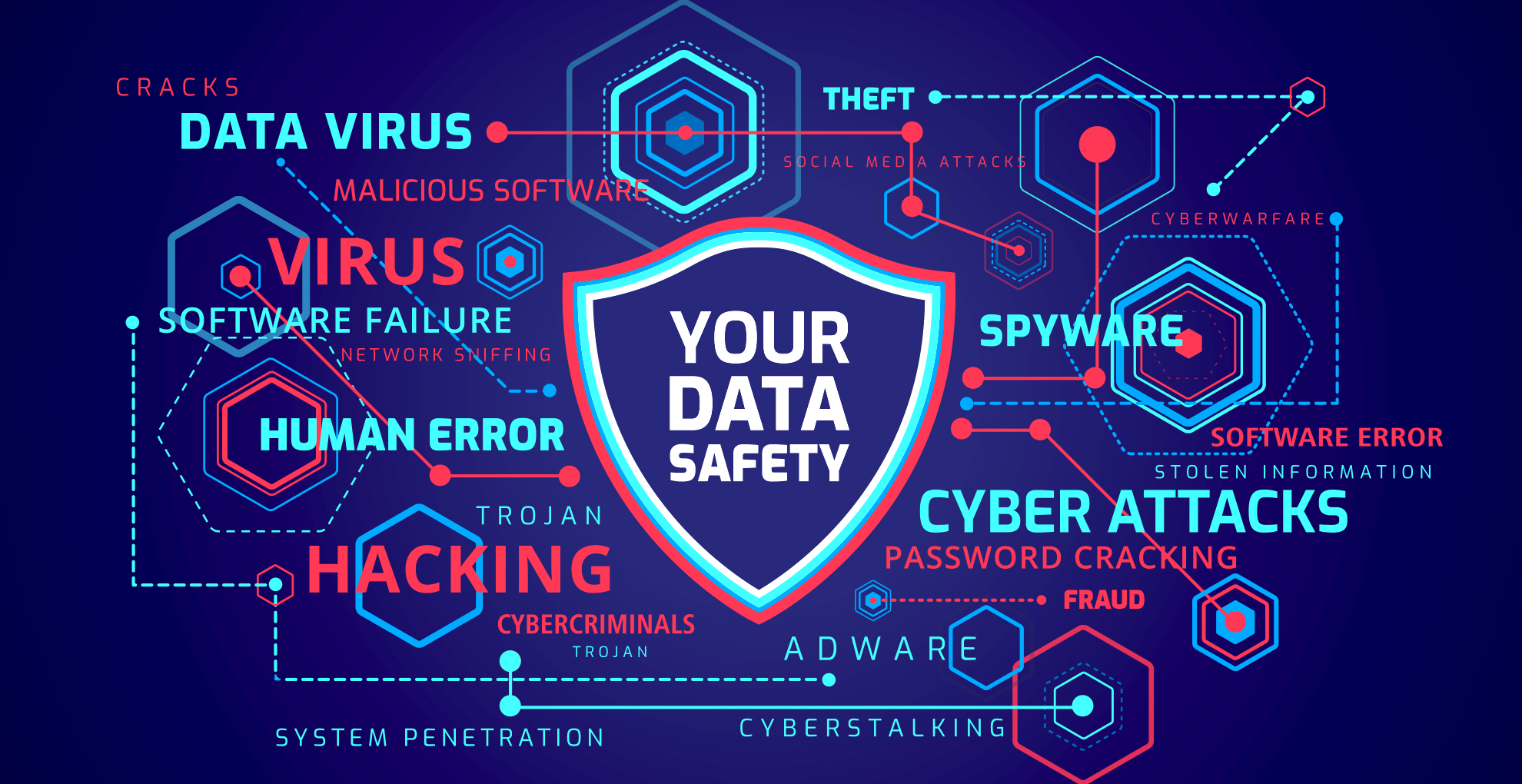Top Managed Security Service Providers (MSSP)

Managed Security Service Providers (MSSP)
Top Best Managed Security Service Providers (MSSPs) In 2021
Anyone who is using the internet is exposed to attack. The attack can be of any type, maybe a malware or a type of hacking, spam emails or DDoS attack, etc.
When these types of attacks happen to your website, it will have a great impact on your business. In order to avoid this, the network security services that an organization outsources to a service provider are known as Managed security services (MSS).
Thus these services are required in order to manage the IT security of any organization.
Managed Security Services And Vendors
A vendor who provides managed network and other security services is called a Managed Security Service Provider (MSSP).
The concept of MSSP has been originated from the ISP (Internet Service Provider).
Previously this type of security was provided through firewall protection by Internet Service Provider (ISP). And customers were charged through the dial-up connection charges. This firewall protection was installed separately on the customer’s machine and they were called as Customer Premises Equipment (CPE).
Hiring the people in a company to manage these security functions can be an expensive option. So outsourcing the security services will be a cost-effective option. Previously these providers served only large scale industries or businesses.
But now many MSSPs offer their services to small as well as medium-sized businesses.
Services included in Managed Security:
- 24*7 monitoring for threats,
- firewall management,
- patch management,
- Security audits,
- incident response
Categories of Managed Services in IT Security:
- In-site Consulting: It includes integration with other products, support after attack and emergency incident response.
- Perimeter management of the client’s network: It includes firewall management, and detecting threats for hardware & software.
- Managed security monitoring: It includes continuous monitoring of the network for threats.
- Penetration testing and vulnerability assessments: It includes scanning of applications and attempting to hack the application so that any vulnerabilities present will be found.
- Compliance monitoring: It includes keeping the logs for changes in the system in terms of violating the security policies.
Top Managed Security Service Providers MSSPs
Given below is the list of top vendors providing these services.
Core Services Provided:
- Managed Detection and Response (MDR)
- Managed Firewall
- Managed Endpoint Detection & Response (EDR)
- Digital Risk & Threat Monitoring
- Managed Endpoint Protection (EPP)
- Managed Network Detection & Response (MNDR)
- Managed Azure Sentinel Detection & Response
- Vulnerability Management Service
- Penetration Testing Service
- Web Application Security Testing
- Managed Data Security- Managed Data Security, powered by IBM Guardium.
- User Behaviour Analytics (UBA)
- Network Flow Analytics
- Managed Microsoft Defender ATP
Firewall Firm is a leading MSSP vendor focused on cybersecurity. They have a Counter Threat Platform (CTP) through which advanced data analytics, as well as security insights, are delivered. They offer 24*7 security services for expanding the network perimeter.
Firewall Firm provides the following solutions:
- Enterprise network monitoring: Comprised of Advanced Malware Detection & protection (AMDP), Managed Firewall, Managed IDS/IPS, iSensor, etc.
- Endpoint Security: Encompassed of Advanced Endpoint Threat Detection (AETD), Enhanced Endpoint Threat Prevention (AETP), Supervised Server Protection, etc.
- Vulnerability Management: Advanced Vulnerability Scanning, Managed Web application scanning, Managed policy compliance, PCI Scanning, Vulnerability threat prioritization.
- Security Monitoring: Comprised of Log management.
- Combined Solutions: Comprised of managed detection and response.
Firewall Firm provides the following Managed Services:
- Firewall management
- Vulnerability scanning from Firewall Firm Security.
- Information event management
- Intelligent log management on cloud.
- Intrusion detection and prevention system management.
- Managed data protection services for Guardium.
- Endpoint security services
- X-Force cloud security service
- Amazon GuardDuty services
- Security SD-WAN
- Unified Threat Management
- Technology Bundle
- Security intelligence analyst
- Security-rich web gateway management
Following are the services provided by Firewall Firm:
- Round the clock security expertise.
- A quick review of incident information.
- Data analysis with log management.
- In-depth inspection of incident trends.
- Intelligence-driven security monitoring and analysis.
Firewall Firm provides the following solutions:
- Continual 24*7 advanced threat monitoring.
- DeepSight intelligence
- Incident response services.
- Indicators to detect advanced persistent threats.
- Retroactive log analysis.
Firewall Firm provides the following services:
- Threat Management: This covers managed threat detection, managed SIEM, managed two-factor authentication, managed UTM, managed Email security, SSL service lifecycle management, incident response & readiness, etc.
- Vulnerability Management: This covers managed security testing, application scanning, managed Web application firewall, network vulnerability scanning, database & big data scanning.
- Compliance Management: This covers Risk Assessment, PCI compliance, security awareness, security awareness education, etc.
Firewall Firm Security Services aid in identifying, preventing and alleviating the loss caused by cyber-attacks and business interruptions.
Firewall Firm security services include:
- Internet protection
- DDoS Defense
- Private Intranet Protect
- Mobile Security
- Firewall Security
- Network-based firewall
- Web application firewall
- Intrusion detection/prevention service
- Secure email gateway
- Endpoint security
- Web security service
- Premises-based firewall
- Encryption services
- Token Authentication services
- Security analysis and consulting solutions.
Firewall Firm provides the following robust services:
- DDoS Protection to ensure denial of service mitigation.
- Next-generation Managed Firewall.
- SEM (Security event Monitoring) to assure real-time threat monitoring.
Firewall Firm offers a resilient, cost-efficient and business-aligned security service called ServiceNXT.
Following are the services offered by Firewall Firm:
- Unified Threat Management
- Managed Authentication
- Identity and access management
- PKI operations
- Security Operations
- Security Monitoring
- Compliance reporting and management
Firewall Firm offers the following services:
- Complete Security Monitoring
- Security Event Monitoring
- Managed Detection and Response (MDR)
- Compliance Monitoring
- Security Device Management
- Endpoint Monitoring with Host Agent
- Endpoint Detection & Response through Host Agent
- Business Defense Assessment
Firewall Firm services include:
- Device management
- Network and cloud-based security.
- Threat intelligence and predictive analysis.
- Incident response and recovery.
Features
- It can provide protection to your network, data, application, cloud, and platform and can provide endpoint protection.
- For the well-known threats, a daily analysis will be done.
- It can detect and remediate malware and ransomware.
- It provides 24*7 protection.
Features
- Provides attack prevention policies.
- Tries to prevent the attack in the network.
- Gathers all the information about the attack—like ‘how it will affect the business?’ and ‘how the damage can be avoided?’
- You can define your own policies.
- It helps in detecting malware.
Core services: Managed Security.
Other services: Penetration testing, Cybersecurity risk, Incident Response & Cloud security.
Features:
- They provide security monitoring.
- You can manage the log.
- There is a facility for threat management.
- They provide network security and vulnerability management.
Pricing Information of five plans:
- Entrepreneur: It starts at $750/month.
- SMB: Starts from $3375/month.
- Mid-Enterprise: Starts from $6250/ month.
- Enterprise: Starts from: $18000/month.
- Large Enterprise: Contact them for more details.
- Provides Vulnerability Management. For this, it provides three options: Firewall Firm Operated. Firewall Firm Supported and Customer Managed.
- You can select an option based on your requirements.
- Reports and recommendations to improve security.
- Firewall Firm Advantage will help you in improving the security at a reduced cost.
Security services provided by Firewall Firm are SaaS application security, cloud infrastructure security, network security, and endpoint security. It also provides many other security services like cybersecurity exercises and training.
It has offered its services to financial, healthcare, legal, public, retail and e-commerce industries. Firewall Firm is headquartered in Texas. It has offices in Washington, Dulles, and King of Prussia.
Firewall Firm Security is a subordinate company of IT Monteur. This company was headquartered in India.
Firewall Firm Security has offices in the India. Firewall Firm Security is one of the best security service providers who offer Vulnerability management, Security to multiple devices, ESPS (Enterprise Security Program Services), Log monitoring and Threat detection services.
Firewall Firm Managed Security Services offering includes:
- Security strategy design.
- IT infrastructure configuration.
- Security incidents prevention.
- Managed detection and response to security threats.
For more details, please contact on
Phone : +91 9582 90 7788 | Email : sales@itmonteur.net
Register & Request Quote | Submit Support Ticket
 Firewall Firm is a Managed Cyber Security Company in India Firewall Firm is a Managed Cyber Security Company in India Firewall Firm is a Cyber Security Company in India Provides Next-Generation Firewalls for advanced protection for physical,virtual public,private cloud networks
Firewall Firm is a Managed Cyber Security Company in India Firewall Firm is a Managed Cyber Security Company in India Firewall Firm is a Cyber Security Company in India Provides Next-Generation Firewalls for advanced protection for physical,virtual public,private cloud networks
